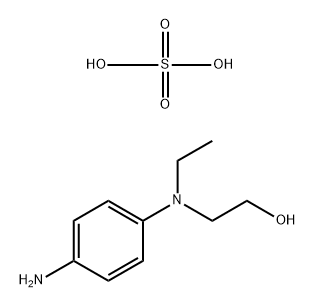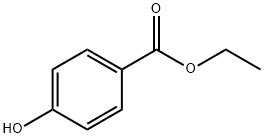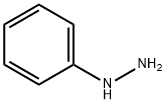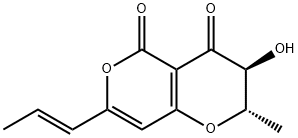N-Ethyl-N-3-((3-dimethylamino-1-oxo-2-propenyl)phenyl)acetamide
- CAS NO.:96605-66-2
- Empirical Formula: C15H20N2O2
- Molecular Weight: 260.33
- MDL number: MFCD04117958
- EINECS: 619-229-8
- SAFETY DATA SHEET (SDS)
- Update Date: 2023-04-23 13:52:06

What is N-Ethyl-N-3-((3-dimethylamino-1-oxo-2-propenyl)phenyl)acetamide?
The Uses of N-Ethyl-N-3-((3-dimethylamino-1-oxo-2-propenyl)phenyl)acetamide
An impurity and intermediate of Zaleplon production
The Uses of N-Ethyl-N-3-((3-dimethylamino-1-oxo-2-propenyl)phenyl)acetamide
An impurity and intermediate of Zaleplon production.It is used as a reagent in the preparation of immunogens for immunodetection and quantification of pyrazolopyrimidine sedatives.
Properties of N-Ethyl-N-3-((3-dimethylamino-1-oxo-2-propenyl)phenyl)acetamide
| Melting point: | 111.0 to 115.0 °C |
| Boiling point: | 400.7±45.0 °C(Predicted) |
| Density | 1.087±0.06 g/cm3(Predicted) |
| storage temp. | Sealed in dry,Room Temperature |
| solubility | Chloroform, Dichloromethane |
| form | powder to crystal |
| pka | 6.40±0.70(Predicted) |
| color | Light orange to Yellow to Green |
| CAS DataBase Reference | 96605-66-2(CAS DataBase Reference) |
Safety information for N-Ethyl-N-3-((3-dimethylamino-1-oxo-2-propenyl)phenyl)acetamide
| Signal word | Danger |
| Pictogram(s) |
 Corrosion Corrosives GHS05  Skull and Crossbones Acute Toxicity GHS06 |
| GHS Hazard Statements |
H227:Flammable liquids H314:Skin corrosion/irritation |
| Precautionary Statement Codes |
P210:Keep away from heat/sparks/open flames/hot surfaces. — No smoking. P260:Do not breathe dust/fume/gas/mist/vapours/spray. P262:Do not get in eyes, on skin, or on clothing. P264:Wash hands thoroughly after handling. P264:Wash skin thouroughly after handling. P270:Do not eat, drink or smoke when using this product. P271:Use only outdoors or in a well-ventilated area. P280:Wear protective gloves/protective clothing/eye protection/face protection. P284:Wear respiratory protection. P301+P330+P331:IF SWALLOWED: Rinse mouth. Do NOT induce vomiting. P303+P361+P353:IF ON SKIN (or hair): Remove/Take off Immediately all contaminated clothing. Rinse SKIN with water/shower. P370+P378:In case of fire: Use … for extinction. P405:Store locked up. P403+P233:Store in a well-ventilated place. Keep container tightly closed. P403+P235:Store in a well-ventilated place. Keep cool. |
Computed Descriptors for N-Ethyl-N-3-((3-dimethylamino-1-oxo-2-propenyl)phenyl)acetamide
New Products
4-AMINO-TETRAHYDRO-PYRAN-4-CARBOXYLIC ACID HCL 4-(Dimethylamino)tetrahydro-2H-pyran-4-carbonitrile 4-Aminotetrahydropyran-4-carbonitrile Hydrochloride (R)-3-Aminobutanenitrile Hydrochloride 3-((Dimethylamino)methyl)-5-methylhexan-2-one oxalate 1,4-Dioxa-8-azaspiro[4.5]decane 5-Bromo-2-nitropyridine Nimesulide BP Aceclofenac IP/BP/EP Diclofenac Sodium IP/BP/EP/USP Mefenamic Acid IP/BP/EP/USP Ornidazole IP Diclofenac Potassium THOMAIND PAPER PH 2.0 TO 4.5 1 BOX BUFFER CAPSULE PH 9.2 - 10 CAP SODIUM CHLORIDE 0.1N CVS ALLOXAN MONOHYDRATE 98% PLATINUM 0.5% ON 3 MM ALUMINA PELLETS (TYPE 73) LITHIUM AAS SOLUTION 2-Bromo-1-(bromomethyl)-3-chloro-5-nitrobenzene 2-Bromo-3-nitroaniline N-(3-Hydroxypropyl)-N-methylacetamide 3-Bromo-6-chloropyridazine 4-ethyl-3-nitrobenzoic acidRelated products of tetrahydrofuran

![10,11-Dihydro-alpha-methyl-10-oxo-dibenzo[b,f]thiepin-2-acetic acid](https://img.chemicalbook.in/CAS/GIF/74711-43-6.gif)






You may like
-
![96605-66-2 N-[3-(3-Dimethyl Amino
Acryloyl)-Phenyl]-N-Ethyl
Acetamide 98%](https://img.chemicalbook.in//ProductImageIndia/2024-03/Raw/b8b6a87d-1f1b-4a4b-9adc-74698863a69b.png) 96605-66-2 N-[3-(3-Dimethyl Amino Acryloyl)-Phenyl]-N-Ethyl Acetamide 98%View Details
96605-66-2 N-[3-(3-Dimethyl Amino Acryloyl)-Phenyl]-N-Ethyl Acetamide 98%View Details
96605-66-2 -
![N-[3-[3-(Dimethylamino)acryloyl]phenyl]-N-ethylacetamide CAS 96605-66-2](https://img.chemicalbook.in//Content/image/CP5.jpg) N-[3-[3-(Dimethylamino)acryloyl]phenyl]-N-ethylacetamide CAS 96605-66-2View Details
N-[3-[3-(Dimethylamino)acryloyl]phenyl]-N-ethylacetamide CAS 96605-66-2View Details
96605-66-2 -
 N-Ethyl-n-3-((3-dimethylamino-1-oxo-2-propenyl)phenyl)acetamide 95% CAS 96605-66-2View Details
N-Ethyl-n-3-((3-dimethylamino-1-oxo-2-propenyl)phenyl)acetamide 95% CAS 96605-66-2View Details
96605-66-2 -
 Zaleplon Related Compound A CASView Details
Zaleplon Related Compound A CASView Details -
 Zaleplon Related Compound A CASView Details
Zaleplon Related Compound A CASView Details -
 1823368-42-8 98%View Details
1823368-42-8 98%View Details
1823368-42-8 -
 2-(3-(tert-butyl)phenoxy)-2-methylpropanoic acid 1307449-08-6 98%View Details
2-(3-(tert-butyl)phenoxy)-2-methylpropanoic acid 1307449-08-6 98%View Details
1307449-08-6 -
 Lithium ClavulanateView Details
Lithium ClavulanateView Details
61177-44-4
Statement: All products displayed on this website are only used for non medical purposes such as industrial applications or scientific research, and cannot be used for clinical diagnosis or treatment of humans or animals. They are not medicinal or edible.